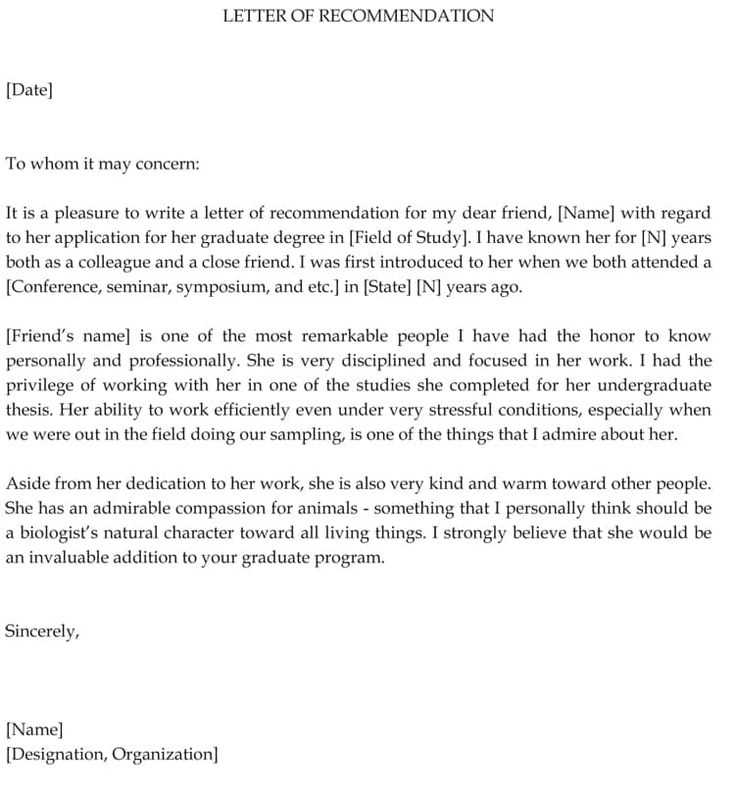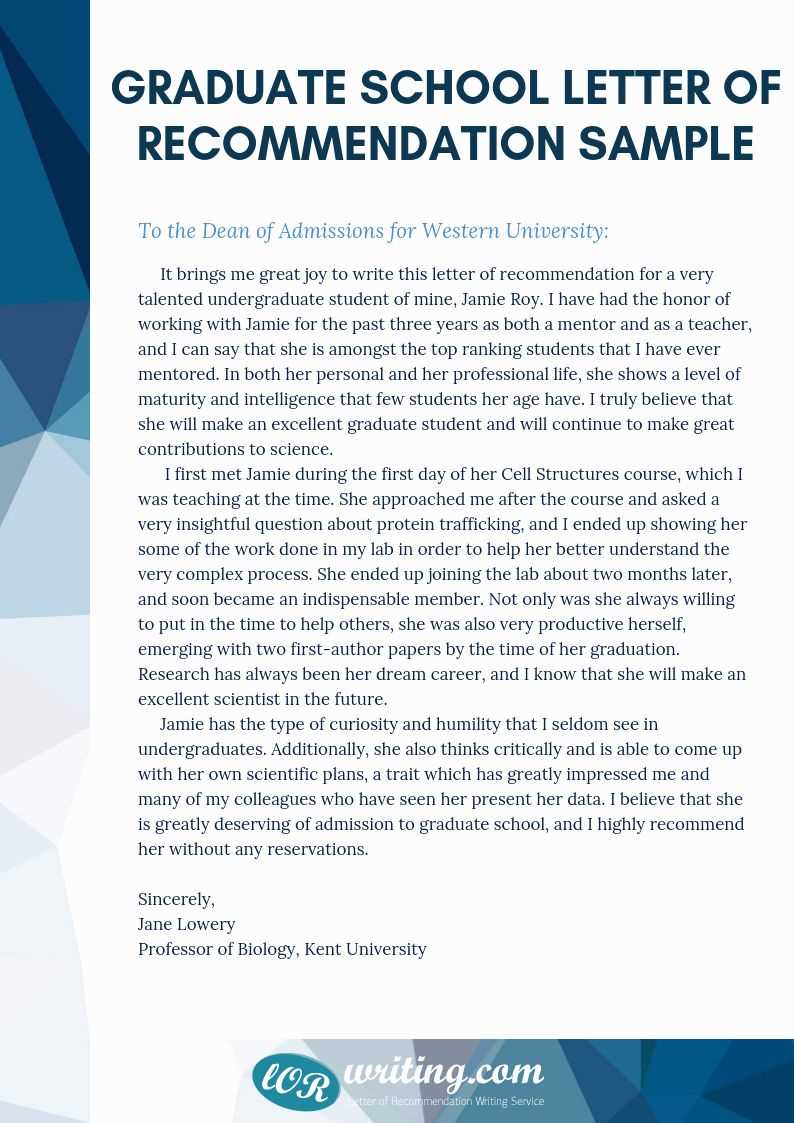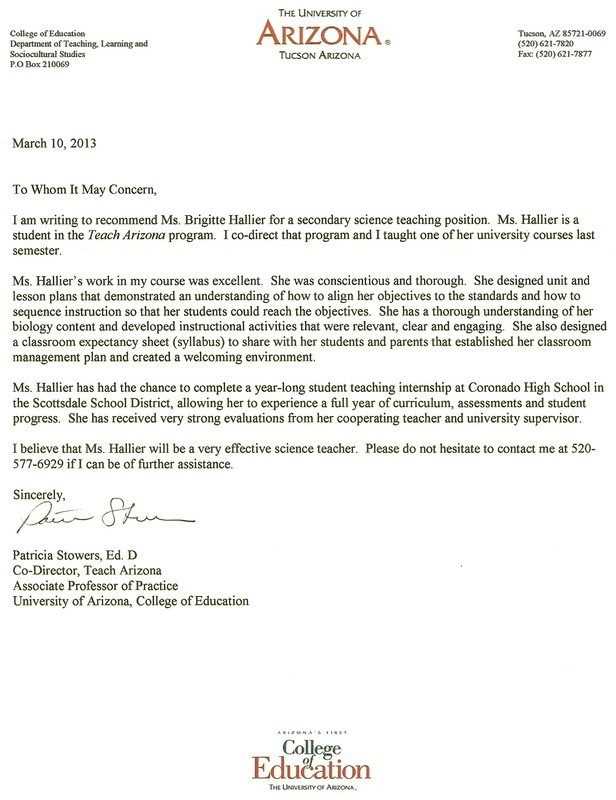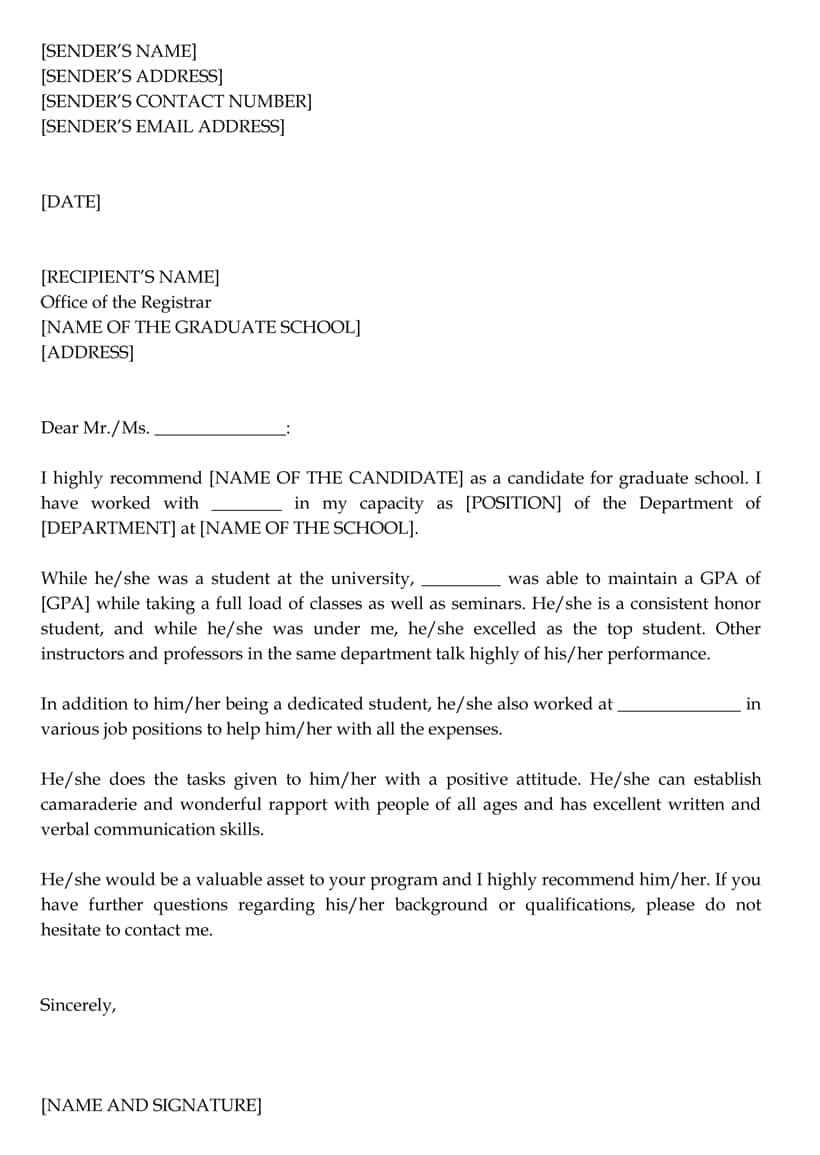Graduate School Recommendation Letter Template

Crafting a compelling endorsement can significantly impact someone’s chances of being accepted into a competitive program. A well-structured and thoughtful statement can highlight the applicant’s skills, character, and potential in a way that makes them stand out to admissions committees.
In this guide, we will explore how to create a powerful and convincing reference that speaks to the strengths of the individual, using clear and persuasive language. Emphasizing key attributes such as academic ability, personal qualities, and work ethic will provide a clear picture of their suitability for further academic pursuits.
Understanding the necessary components and avoiding common pitfalls are crucial in ensuring the reference is effective. We will break down each part of the process to help you create a document that truly reflects the candidate’s abilities and potential.
How to Write a Strong Recommendation Letter

Creating a persuasive and effective endorsement requires careful thought and a clear structure. A well-crafted statement can make a significant difference in how the applicant is perceived by the admissions committee. The key is to focus on the individual’s unique strengths, experiences, and potential, highlighting qualities that align with the expectations of the program they are applying to.
Start by providing specific examples that demonstrate the applicant’s abilities and accomplishments. General statements can be less impactful than concrete instances where the individual showed initiative, leadership, or academic excellence. It’s also important to keep the tone formal yet personal, striking a balance between professionalism and sincerity.
Focus on the applicant’s potential for success in a challenging environment, offering insight into their capacity to grow and contribute to the program. The narrative should be clear, concise, and free from unnecessary details, making sure every part of the statement supports the overall message of the applicant’s suitability. A strong recommendation is not only a reflection of the individual’s past but also an indicator of their future achievements.
Essential Components of a Graduate Letter

A powerful endorsement should be built on several key elements that provide a clear picture of the individual’s qualifications and character. The core of any strong reference includes specific examples that illustrate the applicant’s abilities, achievements, and qualities, making it clear why they are well-suited for the next step in their academic journey.
Introduction and Context

The opening paragraph should establish the relationship between the writer and the applicant. It’s important to briefly mention how long the writer has known the individual and in what capacity. This helps provide context and demonstrates the writer’s credibility in evaluating the candidate.
Key Qualities and Accomplishments
Highlight the most important attributes of the individual, such as academic performance, work ethic, and problem-solving skills. Use specific examples to show how the applicant has demonstrated these qualities in real-life situations. Showing rather than telling makes the endorsement more impactful and convincing.
Conclude with a strong closing statement that reiterates the applicant’s potential and your full support for their candidacy. This section should be concise, leaving a lasting positive impression on the reader.
Common Mistakes to Avoid in Letters
When crafting a statement of support, it’s essential to avoid certain errors that can weaken the overall impact. Small mistakes in tone, structure, or content can diminish the effectiveness of the endorsement, making it less persuasive and potentially less beneficial to the applicant.
Being Too Generic
One of the most common pitfalls is using vague or overly general language. Phrases like “This person is hardworking” or “They are a good student” do not provide enough context to make a strong impression. Instead, focus on specific instances that demonstrate these qualities, giving a clearer picture of the applicant’s strengths.
Over-Exaggerating or Misrepresenting Qualities
While it’s important to highlight an applicant’s strengths, exaggerating or misrepresenting their abilities can be detrimental. A statement that is overly effusive or makes unrealistic claims can come across as insincere. It’s crucial to keep the tone balanced and genuine, ensuring that the qualities you describe are backed by solid examples. Honesty and authenticity are key in maintaining credibility.
Finally, remember to avoid including irrelevant information. Stick to details that directly support the applicant’s qualifications and potential. Too much extraneous content can detract from the core message and weaken the recommendation.
Tips for Personalizing Your Recommendation
Making your endorsement unique is essential to capturing the applicant’s distinct qualities and achievements. Personalization helps the reader see the candidate as more than just a name on a list, providing a deeper insight into their character and potential. This section will outline ways to ensure your statement stands out and feels tailored to the individual.
Use Specific Examples
Generic praise doesn’t carry the same weight as detailed examples. To make your endorsement more impactful, include instances where the candidate demonstrated key qualities such as leadership, innovation, or dedication. These specific moments show the applicant’s abilities in real-world situations.
- Describe a project the individual led or contributed to successfully.
- Share a story where the candidate overcame a challenge or went above and beyond expectations.
- Highlight personal interactions that show their character, such as teamwork or mentorship.
Relate to the Program’s Requirements
Personalizing an endorsement involves understanding the requirements of the program the applicant is applying to. Tailor your message to align with the qualities the program values most, ensuring the reader can see how the candidate will thrive in that specific environment.
- Identify skills and experiences that match the program’s focus areas.
- Link the applicant’s potential to their success in the program’s challenging environment.
- Demonstrate how their goals align with the program’s objectives.
Formatting a Graduate School Reference
The structure of an endorsement is just as important as its content. Proper formatting ensures that the message is clear and professional, making it easier for the reader to digest the key points. A well-organized document not only improves readability but also demonstrates the writer’s attention to detail and professionalism.
Key Sections to Include
A well-structured reference should include several key sections, each serving a specific purpose. These sections help present the candidate in the best possible light and provide a logical flow to the endorsement.
| Section | Description |
|---|---|
| Introduction | Briefly introduce yourself and explain your relationship with the applicant, establishing your credibility. |
| Key Attributes | Highlight the applicant’s key qualities, such as academic ability, leadership, and work ethic, with supporting examples. |
| Conclusion | Reaffirm your strong support for the candidate, summarizing why they are a good fit for the program. |
General Formatting Guidelines
In addition to the content, pay attention to the overall presentation of the endorsement. Keep the font professional and readable, such as Times New Roman or Arial, with a size of 10-12 points. Maintain a clean layout with appropriate spacing between paragraphs and sections. Avoid overly complex fonts or excessive use of bold and italics, which can distract from the message.
Guidelines for Professional Tone and Language
Maintaining a formal and respectful tone is essential when writing any type of endorsement. The language used should reflect both professionalism and sincerity, ensuring that the candidate is presented in the best possible light without exaggerating or using overly casual expressions. A well-written recommendation speaks volumes about both the writer and the applicant.
To achieve a balanced tone, it’s important to remain objective and avoid sounding overly emotional or subjective. While it’s acceptable to express strong support, it should always be backed by factual examples and evidence of the applicant’s abilities. Using precise language and avoiding unnecessary jargon helps ensure the message is clear and easily understood.
Additionally, be mindful of the language’s formality. Use polite and respectful phrases when discussing the individual’s character and abilities, and avoid slang or overly familiar terms. A professional tone builds credibility and reassures the reader of the writer’s qualifications to provide an endorsement.